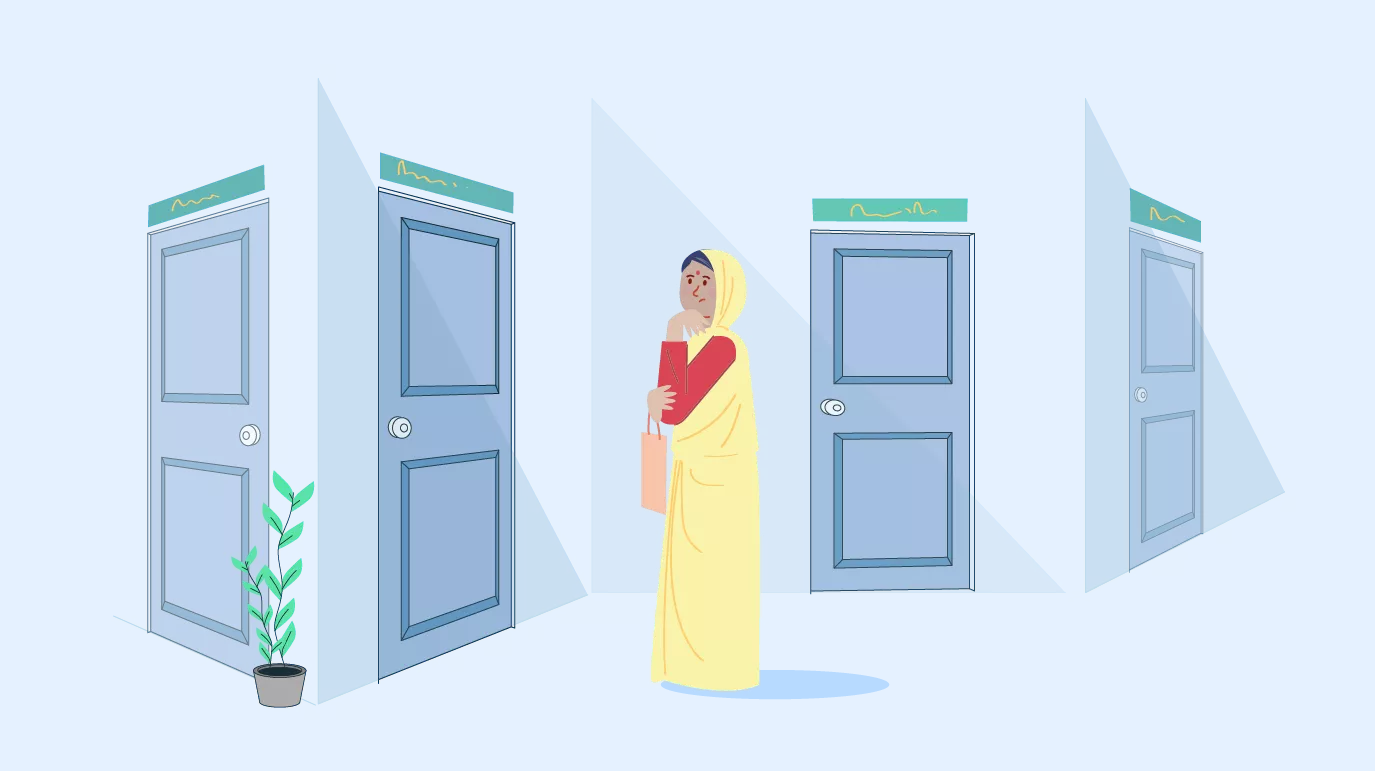The Human Face of Governance

A frail lady, over 40 years old, walks alone into a district collectorate office in Chhattisgarh. She walks through the maze of corridors, trying to find the room that can solve her problem, but she is frustrated by her inability to read the writings above the doors. Revenue department, rural development department, women and child department - all look the same to her. Finally, she musters her courage and asks a man walking briskly down the corridor for guidance. He vaguely points in the direction of the room of interest, then hurries away. She thinks she has finally reached the room. She takes off her slippers in front of the room and nervously enters it. “Sir, ye ration card kahan banega?”
We - four people engrossed in discussing specific programs, priority schemes, its monitoring mechanisms and fancy dashboards the collector uses in his review meeting (described as the “backbone of governance” by another recent stakeholder) with department heads - turn to look at the barefoot lady, dressed in a simple saree and a shawl wrapped around her thin body, clutching only a few sheets of paper. The person whose room we were in, Mr X, takes cognisance of the situation and patiently explains the direction to her, “iss room ke left side, ek room chhod kar doosre room, udhar jaana hai. Bagal wala room nahi, uske baad wala.” She bows, grateful, and walks away.
We take a minute, aware that this incident has brought us back to reality. “Did you notice she took her slippers off and was carrying just an application form? For this, she must have travelled all the way from her village. Transportation is a challenge, so she must have changed 2-3 modes and spent at least Rs. 300 out of her pocket. If she is a NREGA worker, that income is forgone for the day too. Before that, since she is illiterate, she must have asked someone in her village to print and fill the form, who would have charged her a fee too. Now, the department will make her run around and can even send her back or ask to come another day. True good governance would have been if she wouldn’t have had to come so far for such a matter in the first place. All these services, in theory, should be delivered at her doorstep/village. But either she lacks awareness, or the frontline government workers/elected representatives haven’t informed her or helped her in this process, or the government as a whole hasn’t done enough to include and empower her.” One can only nod in agreement with Mr X’s words. My colleague also remarked that if he was a District Collector, his only success metric would be that no common citizen should be seen in his office, for matters that can be resolved locally.
The incident is a reminder that governance is not just about “data, finance, HR.” That may be our understanding of what is important to fix in the government, but the definition at heart is much simpler. While we, as a development sector organisation working on “enabling transformative improvement in the functioning of Indian states”, get caught up in technical details of our interventions, we shouldn’t lose sight of the common people at the “first mile” (let’s also change our outlook to not look at them as the last mile). Especially as a team that values accessible and reliable data, tries to quantify and present them in the best way possible for bureaucrats, let’s not forget the human behind each statistic - their story, struggles and aspirations - and our larger outcome. As our CEO has also emphasised, strengthening data systems is merely a means, and not an end in itself.